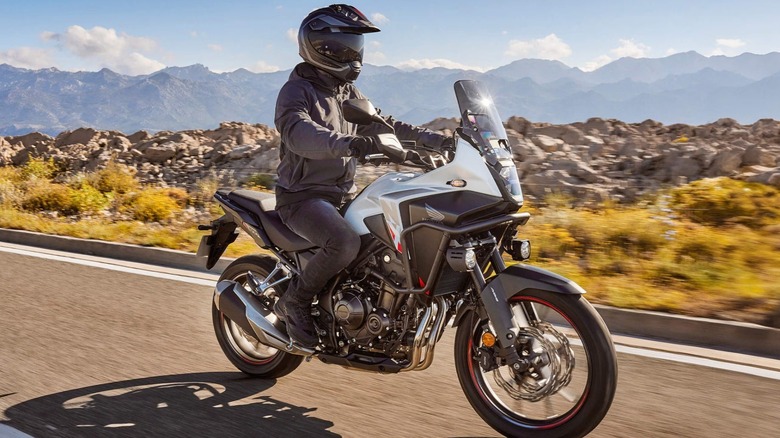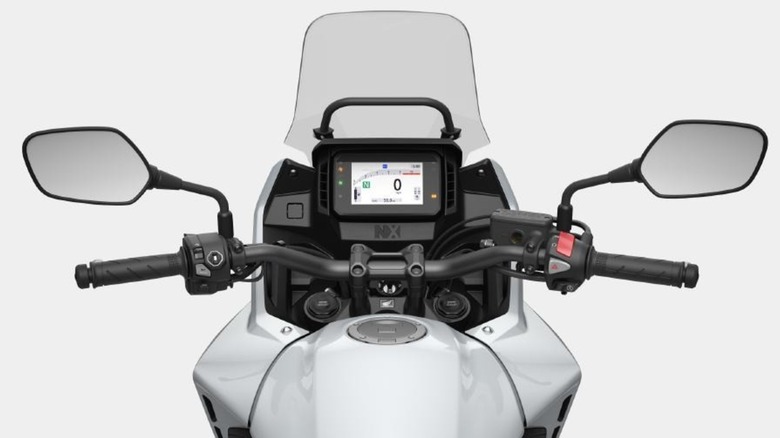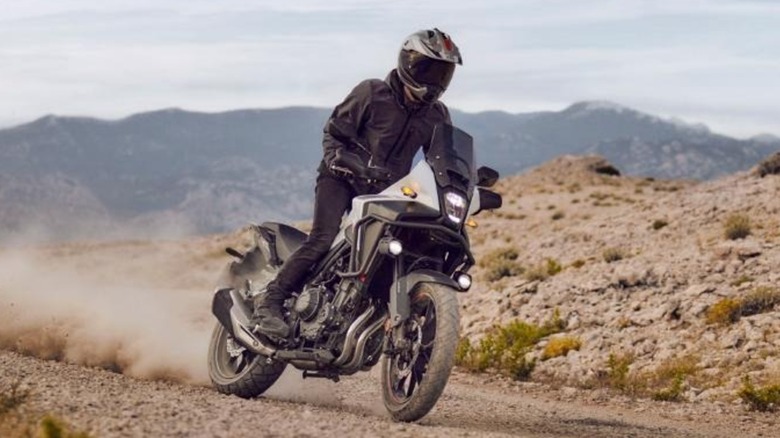Honda CB500X Vs. NX500: What Did Honda Change?
The CB designation has been used on numerous Honda motorcycles over the years. Most recently, it's been applied to a group of easy-to-maintain Honda 500-class motorcycles, such as the CB500R sportbike, CB500F naked, and, until 2024, the CB500X adventure bike. Some people propose the letters CB stood for "City Bike," and while there's no official indication on the meaning of the CB designation, perhaps Honda felt the City Bike's aspirations of adventure are better suited by a different moniker.
Honda discontinued the CB500X name after the 2023 model year after a decade of dutiful service, replacing it with the NX500 for 2024 and beyond. Like the outgoing CB500X, the NX500 is another example of a motorcycle priced well under $10,000 from one of the best-known brands. The current NX500 starts at $7,399 — only $200 more than the 2023 CB500X.
Honda is more forthcoming with the NX designation, stating in a press release that those letters stand for "New X-over." However, Honda did more than simply rename its 500-class adventure bike. Let's explore some of what Honda changed with the new model.
What's new on the Honda NX500?
Although Honda continues to use the 471cc liquid-cooled parallel-twin found on the CB500X to power the new NX500, the Honda Selectable Torque Control (HSTC) system is now standard equipment. The torque control system monitors differences between front and rear wheel speeds. If a difference is detected, the system reduces rear-wheel torque by manipulating the motorcycle's fuel injection system. Riders that don't mind experiencing a little slippage in the interest of maximizing performance can disable the system when desired and restore it for less spirited riding sessions. Along with the HSTC addition, an upgraded Engine Control Unit (ECU) makes the bike feel a bit quicker.
While the frame and suspension remain largely unchanged, other than updated settings for the forks and rear shock, the 2024 Honda NX500 is seven pounds lighter than the 2023 CB500X based on advertised ready-to-ride weights of 432 pounds and 439 pounds, respectively. Nearly half the weight savings came from new wheels fitted to the NX500, saving 3.3 pounds of unsprung weight.
The NX500 incorporates the "Daily Crossover" design with its compact, adventure-ready style. The two models share a similar silhouette, with the exception of the updated front of the NX500. The new design has a less prominent beak below the new LED headlight. Along with the headlight upgrade, a new LED taillight is included, as well as LED lighting all around. Finally, the NX500 features a new five-inch TFT display with an easily operated backlit four-way toggle switch.
Is the NX500 an improvement over the CB500X?
In many ways Honda, provides some significant upgrades for the NX500 not found on the CB500X. However, the similarities between the two models are significant. For example, both bikes use the same 41mm inverted Separate Function Fork Big Piston (SFF-BP) Showa forks, Pro-Link single rear shock, and 471cc four-stroke engines. Suspension travel remains unchanged with 5.9 inches up front and 5.3 inches at the rear wheel.
Those similarities aside, the NX500 provides quicker acceleration and more responsive handling thanks to some ECU tweaks, lighter overall heft, and lower unsprung weight. The new LED headlight provides superior illumination of the road ahead, a particular benefit when riding outside the city limits in search of an adventure.
The addition of standard HSTC is another improvement to rider safety, especially while riding in adverse conditions. While both models offer ABS braking, the NX500 features dual four-piston front brake calipers, an upgrade from the two-piston calipers found on the CB500X.


